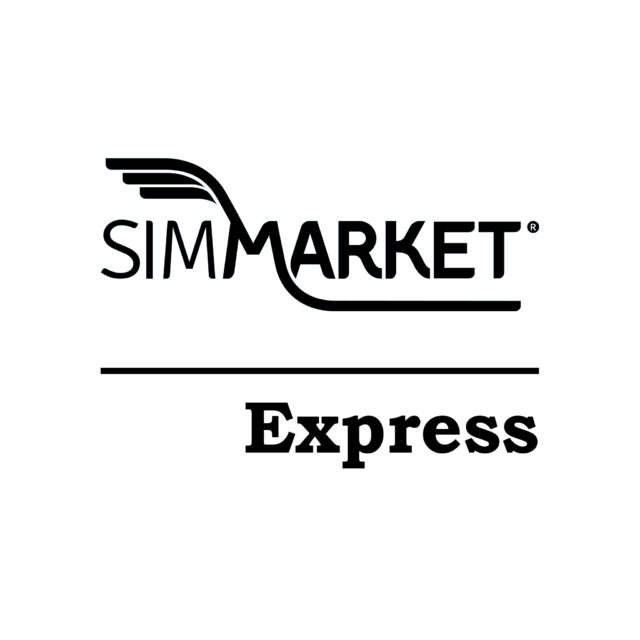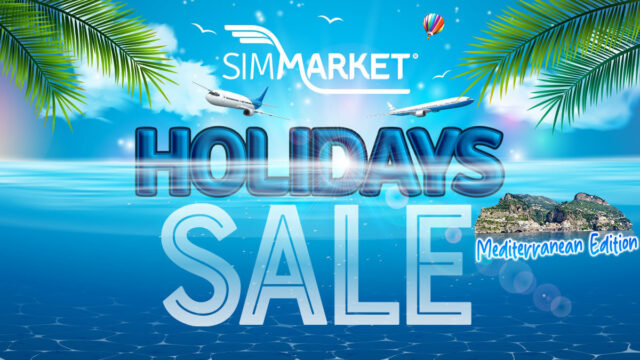Al Peletier’s Round Robin adventure: Alaska Salmon Run. This route is based on a true life run. I depart a bit from the usual Round Robin, as we are flying only the outbound trip, due to the length of the entire flight. It was flown with Microsoft FS2000\FS2002\FS2004\FSX or with any any Flight Sim that has the required Airports and Navaids included in its own database. I got the idea, for this flight, from an article that ran in the April 2006 issue of Airways Magazine. (Airways is one of my favorite aviation magazine).
If you have undertaken previous Round Robins, skip the next paragraph, jump right in, and have fun. For those who are new to this, Round Robins are published with the intent of having Flight-Simmers fly, look at the scenery, refresh our Geography, practice our cross country navigation, perform approaches at different airports all over the world, and have some FUN. In the message, you will be receiving info like: airport departure and runway number, VOR’S and NDB’s enroute, two or three middle airport destinations, for VFR or INST approach, and back to your point of departure (Round Robin). You will also be given ILS and LOM freq., minimums, procedures etc. and a little background on the geography of the area. After you fly a few of these, you will have a much better command and understanding of the different types of published procedures. You will learn to handle a lot of information in a very short time, while still maintaining control of your aircraft.
| Great add-ons for this flight: (Most freeware files can be found at www.flightsim.com or www.avsim.com)
Aircraft and Panel(Payware):
SCENERY (Payware): I was “so” lucky in getting complimentary copies of FSADDON’s Misty Fjords and Alaska Cinematic, by Georender, addon scenery. Both of these scenery addon are nothing short of spectacular. You can purchase them at www.simmarket.com. More Aircrafts and panels: Â There are also numerous freeware Boeing 737 in Alaska Airline livery available at www.avsim.com and www.flightsim.com. |
(A lot of notes regarding ATC will pertain only to FS2002\FS2004 users)
May I suggest, that you READ the route a couple of times before starting out, so that you’ll have the flight plan fairly clear in your mind. Especially in a fast medium or large jet aircraft, there isn’t much time to spare and definitely no room for errors.
The scenario and tasking for this exercise: We are flying an Alaska Airline regular passenger and freight run from Anchorage Alaska to Seattle. We will depart Stevens Anchorage Intl airport and make stops at the small fishing communities of Cordova and Yakutat, to pick up 36,000lbs of salmon and fly it down to Seattle, where gourmet restaurants are waiting for the precious cargo. We have a few passengers on board, some of whom will leave us in Cordova and Yakutat. A note here that this regular flight normally touches down in Juneau, but I couldn’t find scenery to make it work. The default scenery for Juneau is buggy and I could not make any “freeware” Juneau addon scenery work. So, sadly, I ended up bypassing that airport.
Round Robin Adventure: Stevens Anchorage Intl (PANC)>>> Cordova Smith Airport (PACV) >>> Yakutat (PAYA)>>>> Seattle Tacoma Intl (KSEA) Approx total distance 1400 NM.
NOTE: For the purpose of these exercises, we will assume that we are receiving Radar vectors to different VOR’s or ILS interception points. In the “Real” world of today, aircraft usually receive vectors to the interception points, to ensure proper separation. I’m also assuming that you will have a good look at the Approach plates for each segment.
One more note. If you are using ATC for take off, taxi and landings, you might be given different RWY or taxi way, depending on the weather. You might even input the whole trip in a FS flight plan and fly it that way.
BEGIN
LEG 1: Stevens Anchorage (PANC)>>> Cordova Smith (PACM) (Approx 190 nm).
- Clock to 1530L, season late summer. Weather at your discretion.
- For the Boeing 737-400 users, set payload at 12,000lbs and fuel at 34,000lbs. This should allow us to be at landing weight at Cordova and Yakutat, without refueling. As for the 727-100 users, take on about the same amount of fuel. The entire route will take 26000lbs of fuel and our total cargo will be 34.000lbs, after we load up with Salmon at Yakutat and Cordova. I have downloaded fuel charts for the 727-100 and I enjoy managing my fuel and sticking to recommended maximum and minimum weights. Most payware addon airplanes come with these charts, so I will leave that up to you.
- Select Stevens Anchorage Intl airport under airport/usa/alaska.
- Dial in the Anchorage VOR (ANC) frequency 114.30 on NAV 1 and the JOHNSTONE Point (JOH) VOR frequency 116.70 on NAV2
- Taxi to and T/O RWY 32. Climb RWY HDG to 3000, followed by a left hand turn to track the ANC VOR to on top, and continue climb to 21,000. On top of the ANC VOR, turn left HDG 085. Track the JOHNSTONE VOR on reception.
- Enroute dial in the LOC I-CDC frequency 110.7 and set course 267 on your NAV 1 OBI in preparation for an ILS to RWY 27 at CORDOVA (actual RWY course 267, elevation 42, RWY length 7500).Also tune in the NDB Glacier River (GCR) frequency 404 (It is located over the airfield)
- 20nm out of (before) the JOHNSTONE VOR, begin descent to 6000.
- Over the JOH VOR, turn left HDG 061, maintain 6000’ and home the GCR NDB (This will take us right on top the airfield)
- On top the GCR NDB, turn right HDG 087, descent to 5000 and maintain until 15NM out. Then a right hand turn to HDB 132 for 1.5 minute, followed by a left hand turn to HDG 312 to intercept the LOC. Descend to 3400 in the turn.(Very important note: Do not descend below 5000 until in the turn outbound, and not below 3400 until 11nm inbound on the LOC).
- Continue with the approach.
- 5nm back, you are cleared for a full stop to RWY 27 at Cordova. Check gear down.
Land at Cordova and taxi to terminal located on the North side of RWY 27.
LEG 2: Cordova Smith (PACV)>>>> Yakutat (PAYA) approx distance 200 nm
- Clock to 1730. Weather at your discretion. Fuel should be OK. We take on 20,000lbs of fish and 10 pax. Adjust your aircraft weight accordingly.
- Keep the Cordova Smith LOC freq 110.7 on NAV1. Dial in the YAKUTAT (YAK) VOR frequency 113.30 on NAV 2.
- Taxi to and T/O RWY 09, climb to 21000 and fly the LOC Back Course until 43.7nm out, or 141nm out of the YAK VOR. We are now over the FORAT Intersection. Now, track the YAK VOR.
- Enroute, dial in the Localizer I-YAK frequency 111.1 and set course 106 on your NAV 1 OBI in preparation for an ILS to RWY 11 at Yakutat (Actual course 106, RWY length 7745, elevation 33). You can also tune in the Ocean Cape (OCC) NDB frequency 385, which is located 3 miles back of RWY 11.
- 85nm out of the YAK VOR, begin descent to 3000
- 30nm out, turn left HDG 062 and descend to 2000 to intercept the LOC
- Intercept the LOC and continue with the approach.
- 5nm back, you are cleared for a full stop to RWY 11 at Yakutat airport. Check gear down and locked.
Land at Yakutat and backtrack to terminal.
LEG3: Yakutat (PAYA)>>>>>>Seattle-Tacoma (KSEA) approx distance 996nm
- Clock to 1900L. Weather at your discretion. We take on another 16,000 lbs of fish and 10 more passengers. Make sure you have enough fuel for the 2 hour flight to Seattle and for alternate/hold. On the 727, I ended up having to take on more fuel, after flight planning, and ended up with 41000lbs of fuel and 39,000lbs of cargo/pax.
- Dial in the YAKUTAT VOR (YAK) frequency 113.30 and set course 113 on your NAV 1 OBI.
- Taxi to and T/O RWY 11, left climbing turn and establish on the 113 radial on the YAK VOR, continue climbing to 37000’.(Climb in steps if necessary at your aircraft’s present weight).
- While climbing, dial in and track (on reception) the BIORKA ISLAND (BKA) VOR frequency 113.80.
- Over the BKA VOR turn to HDG 124. Dial in and track the SANDSPIT (YZP) VOR frequency 114.10 to on top (Reception about 60nm passed the BKA VOR)
- Over the YZP VOR turn left HDG 109. Dial in and track the PORT HARDY (YZT) VOR frequency 112.00 to on top. (Reception about 35nm passed the YZP VOR)
- Over the YZT VOR dial in and track the VICTORIA (YYJ) VOR frequency 113.70 to on top.
- 50nm out of (before) the YYJ VOR, begin descent to 7000
- While enroute, dial in the LOC I-TUC frequency 111.7 and set course 341 on your NAV1 OBI in preparation for an ILS to RWY 34L at KSEA (actual course 341, elevation 433, RWY length 9426)
- Over the YYJ VOR turn right HDG 137. Dial in and track the Olympia (OLM) VOR frequency 113.40 to on top and continue descent to 3500
- Over the Olympia VOR, turn left HDG 039 to intercept the LOC (about 28nm to intercept. Begin your turn about 3 miles before the on top)
- Continue with the approach
- 5nm back, you are cleared for a full stop to RWY 34L. Check gear down and locked.
LAND at Seatac airport and take first right to terminal,
Welcome home!
END
A little more history on this flight. (With the help of Airways magazine).
Alaska Airline had a 737-400 painted to look like an Alaskan King Salmon. This came about after a $500,000 grant from the Alaska Fisheries Marketing Board to promote Alaska Salmon. A dedicated team of 30 painters took 24 days to apply the 140USg (530L) of paint needed for the piscine artwork. About twice the amount required for the standard Alaska Airlines “Eskimo” livery. The paint should last four to six years (five coasts of clear gloss paint were applied to enhance durability). Jehl Xavier did an awesome job of a repaint for Flight Sim of this exact airplane. Hi model (mentioned above) works with the Wilco 737-400
The route you just flew is a regular scheduled flight that usually touches down in Juneau before proceeding to Seattle but I couldn’t get the Navaids to work right in Juneau.
The Alaska Cinematic Vol 1 scenery by Georender (available at simMarket.com) made this trip a real treat.
Al’s Flight Sim tip for this month’s flight
I quite often refer to “Payware” scenery/aircraft addon in the (Great Addon’s) box. A small investment of usually $100 or less, will usually give you some great scenery to enhance your favorite flying area(s). In my case, it is Alaska and British Columbia. You will not regret purchasing some scenery for your Flight Simulator. Also, adding your airplane of choice, along with your local scenery, will make your flight simming experience much more realistic and entertaining! I don’t get paid for saying this. I just strongly believe in this approach. There is no need to buy the entire planet, but your regular stops will look so much better with the extra scenery.
| Al’s thank you box: Without the people below and our payware/freeware designers, I couldn’t write these articles. So my sincere thanks to all those and to www.flightsim.com and www.avsim.com 1. Quotes and photos from Airways magazine are courtesy of and with permission of the Editor. Many thanks! |







